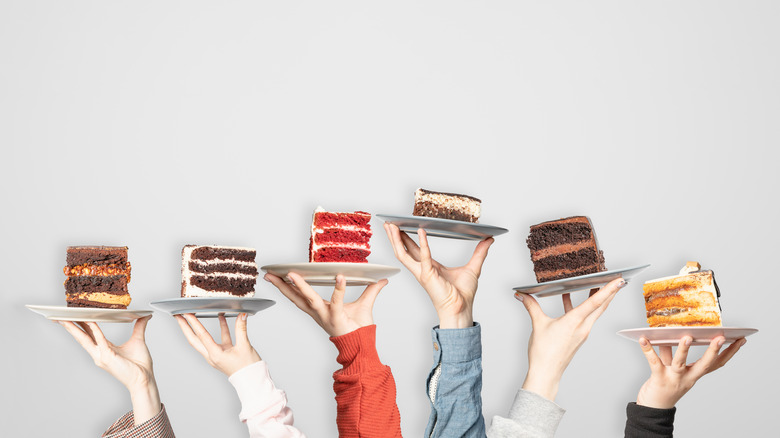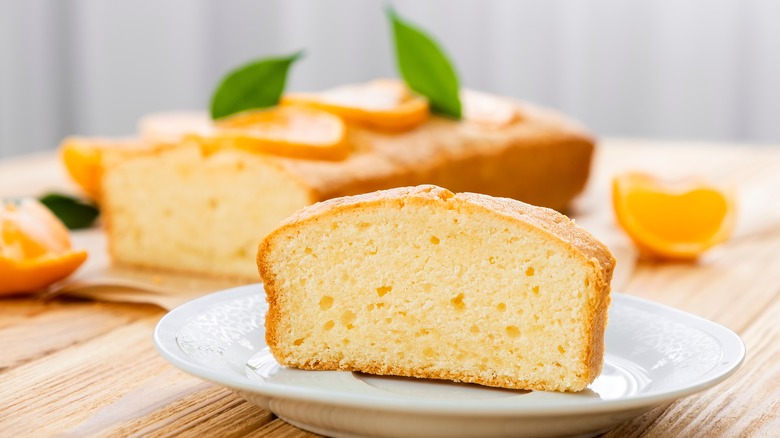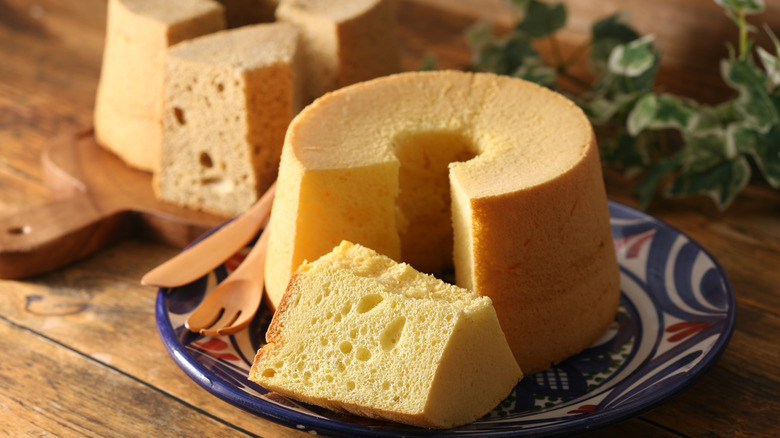What's The Difference Between Shortened And Foam Cakes?
Walk past the display case of your local bakery, and you'll undoubtedly feast your eyes on a wide assortment of cakes. Cakes come in various shapes, sizes, and colors, but as with many things, what's important is on the inside. Cake types are generally divided into two main categories depending on how the batter is prepared, which are 1) shortened cakes and 2) unshortened cakes, more commonly known as foam cakes.
Before we get into the differences between these two categories, let's answer the question of what does "short" mean when it comes to baking? So, the short version of the explanation is that shortened doughs and batters bake up into goods that have short gluten strands.
Let's get into it: Gluten gives a lot of baked goods their structure, and while long gluten strands are necessary for the sturdy structure of items like bread and pizza, we need short gluten strands in recipes for cakes and cookies for that tender crumb. To achieve these short gluten strands, a higher proportion of fat is needed to hinder the development of gluten. These fats include butter, oils, and, yes, shortening — which is how it got its name.
Does this mean that unshortened cakes are tougher? No, because in the case of foam cakes, "unshortened" refers to the lack of fat in the dough or batter while still baking up to a tender, soft crumb.
Shortened cakes explained
Shortened cakes are also known as butter cakes and creamed cakes. They tend to have more of a chew, with tighter, moist crumbs. Cakes like pound cakes, devil's food cakes, and coffee cakes fall under this category, as do many supermarket variety birthday cakes.
Recipes for shortened cakes usually begin with a creaming step, during which the fat (often softened butter) and sugar are beaten together until pale yellow and fluffy. This is followed by adding liquid ingredients such as eggs and milk, then with dry ingredients like flour and chemical leaveners such as baking soda and baking powder, which help the cake rise even more. Sometimes the recipe directions will indicate that you alternate adding the dry and liquid ingredients so that the flour does not get overworked — this makes for the aforementioned long gluten strands, resulting in a tough cake.
The first step of creaming works air into the fat, creating many tiny bubbles that inflate during baking. This happens as the liquid ingredients in a cake turn into steam, and the proteins and starches from the eggs and flour hold that bubbly structure into place. Try this technique with an easy lemon yogurt pound cake to see it in action.
Characteristics of foam cakes
Foam cakes consist of cakes such as angel food cakes, chiffon cakes, and sponge cakes. These cakes are super light and airy, thanks to their bigger, more open crumb and lack of flour (i.e., little to no gluten). Its texture is drier compared to shortened cakes due to the lack of fat but is equally tender to the bite, if not more so.
So how do these cakes achieve their voluminous size? The clue is in the name: eggs (often just the whites) are beaten with sugar until peaks form, creating a mass of bubbly foam. This process is also used for vegan cakes that incorporate aquafaba to achieve the necessary lift. Some foam cake recipes involve adding a scant amount of flour for extra stability or even egg yolks, like in chiffon cakes.
Foam batters require immediate baking lest the bubbles deflate, as these recipes do not usually involve chemical leaveners. So remember to reserve ample time for the oven to preheat properly. This lemon meringue angel food cake is a delicious recipe to practice the technique for making foam cakes.


